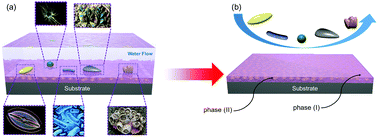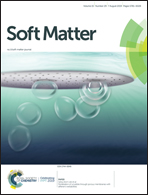Stress-localized durable anti-biofouling surfaces
Abstract
Growing demands for bio-friendly antifouling surfaces have stimulated the development of new and ever-improving material paradigms. Despite notable progress in bio-friendly coatings, the biofouling problem remains a critical challenge. In addition to biofouling characteristics, mechanically stressed surfaces such as ship hulls, piping systems, and heat exchangers require long-term durability in marine environments. Here, we introduce a new generation of anti-biofouling coatings with superior characteristics and high mechanical, chemical and environmental durability. In these surfaces, we have implemented the new physics of stress localization to minimize the adhesion of bio-species on the coatings. This polymeric material contains dispersed organogels in a high shear modulus matrix. Interfacial cavitation induced at the interface of bio-species and organogel particles leads to stress localization and detachment of bio-species from these surfaces with minimal shear stress. In a comprehensive study, the performance of these surfaces is assessed for both soft and hard biofouling including Ulva, bacteria, diatoms, barnacles and mussels, and is compared with that of state-of-the-art surfaces. These surfaces show Ulva accumulation of less than 1%, minimal bacterial biofilm growth, diatom attachment of 2%, barnacle adhesion of 0.02 MPa and mussel adhesion of 7.5 N. These surfaces promise a new physics-based route to address the biofouling problem and avoid adverse effects of biofouling on the environment and relevant technologies.



 Please wait while we load your content...
Please wait while we load your content...
